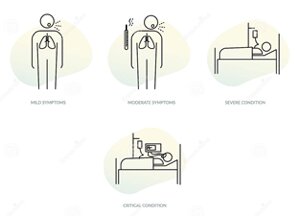Summary of major ongoing and planned projects.
1. Biomarker Identification

1.1. Identification of cervix carcinoma biomarkers using proteomics on cervicovaginal fluid
In collaboration with prof. Wiebren Tjalma (UZA, Antwerp)
With the expertise we built up on the proteome analysis of cervicovaginal fluid (CVF) (Zegels et al., 2009, 2010), we focused on identification of biomarkers in CVF (Van Raemdonck et al., 2014; Van Ostade et al., 2014; 2018). CVF is very suitable for biomarker determination as the biomarker proteins are diluted in a low volume (eg. compared to plasma) and originate from a limited set of organs, thereby increasing sensitivity and specificity. Several differential CVF proteomics studies were performed that point to potential protein biomarkers representing increased protection against HIV-1 infection (as seen in e.g. Human Exposed Seronegatives or ESN individuals) or precancerous states of cervical cancer.
References:
- Increased Serpin A5 levels in the cervicovaginal fluid of HIV-1 exposed seronegatives suggest that a subtle balance between serine proteases and their inhibitors may determine susceptibility to HIV-1 infection. Van Raemdonck G, Zegels G, Coen E, Vuylsteke B, Jennes W, Van Ostade X. Virology. 2014 Jun;458-459:11-21. doi: 10.1016/j.virol.2014.04.015. Epub 2014 May 5
- Identification of protein biomarkers for cervical cancer using human cervicovaginal fluid. Van Raemdonck GA, Tjalma WA, Coen EP, Depuydt CE, Van Ostade XW. PLoS One. 2014 Sep 12;9(9):e106488. doi: 10.1371/journal.pone.0106488. eCollection 2014
- IPA Analysis of Cervicovaginal Fluid from Precancerous Women Points to the Presence of Biomarkers for the Precancerous State of Cervical Carcinoma.Van Ostade X, Dom M, Van Raemdonck G. Proteomes. 2014 Aug 13;2(3):426-450. doi: 10.3390/proteomes2030426
- Candidate biomarkers in the cervical vaginal fluid for the (self-)diagnosis of cervical precancer.Van Ostade X, Dom M, Tjalma W, Van Raemdonck G. Arch Gynecol Obstet. 2018 Feb;297(2):295-311. doi: 10.1007/s00404-017-4587-2. Epub 2017 Nov 15.
1.2. Protein biomarkers from Low Birth Weight Piglets
The purpose of this research is to examine the effect of alternative breeding strategies on the health status of piglets via analysis of the salivary proteome. Existing biomarkers for this purpose are not sensitive and specific enough because they are upregulated in both stress and disease. The proposed project therefore aims to identify specific biomarkers for stressors which can be used in the evaluation of breeding strategies. The results will lead to scientific advice for the pig sector. The piglet salivary proteome was identified (Prims et al., 2019; 2020) and a differential study is ongoing.
- On the characterisation of the porcine gland-specific salivary proteome.Prims S, Van Raemdonck G, Vanden Hole C, Van Cruchten S, Van Ginneken C, Van Ostade X, Casteleyn C. J Proteomics. 2019 Mar 30;196:92-105. doi: 10.1016/j.jprot.2019.01.016. Epub 2019 Jan 29.
- Hair or salivary cortisol analysis to identify chronic stress in piglets?Prims S, Vanden Hole C, Van Cruchten S, Van Ginneken C, Van Ostade X, Casteleyn C. Vet J. 2019 Oct;252:105357. doi: 10.1016/j.tvjl.2019.105357. Epub 2019 Aug 17.
The purpose of this research is to examine the effect of alternative breeding strategies on the health status of piglets via analysis of the salivary proteome. Existing biomarkers for this purpose are not sensitive and specific enough because they are upregulated in both stress and disease. The proposed project therefore aims to identify specific biomarkers for stressors which can be used in the evaluation of breeding strategies. The results will lead to scientific advice for the pig sector. The piglet salivary proteome was identified (Prims et al., 2019; 2020) and a differential study is ongoing.
In collaboration with prof. Chris Van Ginneken (UA, Antwerp)
The mechanism responsible for the different morbidity seen in intrauterine growth restricted (IUGR) male vs. female children is poorly explored. We hypothesize that sex-related variances in angiogenesis cause this difference. To answer this hypothesis, a largescale study using the IUGR piglet as the animal model will be set up to document the male versus the female IUGR phenotype and the angiogenic potential of umbilical cord endothelial cells. A hypothesis-free proteomic study, complemented by an in vitro study of the behavior of umbilical vein endothelial cells, will be used to understand the molecular mechanisms behind the sexually dimorphic response to IUGR. Revealing the molecular mechanisms behind the sex-dependent effect of IUGR on morbidity during childhood will pave the way for improved diagnostics and personalized medicine.
2. Viral Disease Outcome. Patient suseptibility for Dengue/Zika infection evolution in Cuban populations

In collaboration with profs. Veerle Vanlerberghe (ITM, Antwerp), Kevin Ariën (ITM, Antwerp), Wim Vanden Berghe (UA, Antwerp), Sierra Beatriz (IPK, Havana, Cuba) and Julio César Escalona-Arranz (UO, Santiago de Cuba, Cuba)
References:
- Adverse drug reactions in the treatment of COVID-19: a comprehensive analysis focused on the hospitalized patients with the use of a survey, Cuba 2020
Lizette Gil-del-Valle, Pablo Sariol-Resik, Tatiana Prieto-Dominguez, Waldemar Baldoquin-Rodríguez, Beatriz Sierra-Vázquez, Ana Beatriz Perez-Díaz, Rosario Gravier-Hernández, Mario Manuel Delgado-Guerra, Joniel Arnoldo Sánchez- Márquez, Olga Elena López-Fernández, Faustina Fonseca-Betancourt. Liana Valdés-Lanza, Odalys Orraca-Castillo, Xaveer Van Ostade, Wim Vanden Berghe, Veerle Vanlerberghe, M. Guadalupe Guzmán-Tirado. Submitted
Arboviruses such as dengue (DENV) and zika (ZIKV) viruses are a major concern in tropical and subtropical countries such as Cuba where the arthropod vector Aedes is widespread. They are also of increasing interest in other regions (Europe, US…) as climate change and globalization extend the dispersion of the vector and viruses. Remarkably, humans respond very differently to these viruses, from absence of symptoms to hemorrhagic fever (DENV) and neonatal malformations/neurological disorders (ZIKV). We are collaborating with Cuban scientists on the identification of environmental/lifestyle factors that influence dengue and/or Zika infection outcome, and the responsable molecular changes that they cause. Samples (serum, PBMC) are from Cuban population groups with expected differences in dengue/Zika susceptibilities due to 1. inhabiting different provinces, 2. use of different diets, 3. use of specific natural (medical) products or 4. exposure and/or use of toxins. The samples will be investigated for epigenetic and proteomic changes. As a result of the Covid-19 pandemic, the above mentioned objective was switched towards SARS-CoV-2 infections during execution of the project. In this project Cuban scientists from the IPK (Havana) or UO (Santiago de Cuba) are learning state-of-the-art epigenetics/proteomics techniques in Belgium and further disseminate these in Cuba by means of courses/seminars organized by them or in collaboration with the Belgian partners.
In collaboration with profs. Wim Vanden Berghe (UA, Antwerp), Luc Pieters (UA, Antwerp), Beatriz Sierra (IPK, Havana, Cuba) and Julio César Escalona-Arranz (UO, Santiago de Cuba, Cuba)
As a continuation of the VLIR-SI Project (see above) we aim to identify the molecular mechanisms causing severe clinical outcome in viral diseases such as Covid-19. Interestingly, our previous study has already pointed out some correlations, especially with chronic inflammation, MCP-1 expression and hyperhomocystenosis (HHCy). Given this outcome, we wish to go one step further and study the effect of these conditions (HHCy and chronic inflammation) on covid-19 outcome at a molecular level. We choose for an epigenetics/proteomics approach since literature suggests that redox reactions may lie at the basis of this effect. Since S-adenosylmethionine (SAM), the direct metabolite of methionine and the methyl donor for nearly all methylation reactions in the body, is irreversibly converted to S-adenosylhomocysteine (SAH), the metabolic precursor of homocysteine (Hcy), the SAM/SAH index will be determined. Since it is known that HHcy induces epigenetic mechanisms, possibly involved in regulation of MCP-1, methylation of the MCP-1 promotor region will be investigated. In addition, genomic sequencing will search for mutations in MCP-1, PON-1 and MTHFR, known to be involved in HHCy. For the proteomics part, we will use the thio-TMT protein labelling strategy to determine the redox status of every custine-containing protein in cells from patients with severe symptoms vs. patients with mild symptoms.
3. Quantum Biology

Recently the lab has started a new research line that is focused on a fundamental aspect of biochemistry. The relative new and highly interdisciplinary field of quantum biology (i.e. the involvement of non-trivial quantum physical phenomena such as entanglement, non-locality and tunneling in biological systems) is a so far underestimated discipline in biochemistry that urgently needs more attention. These principles may provide an explanation for higher brain functions such as synchronization of different brain areas and even aspects of consciousness. We believe that the application of different proteomics strategies can be of great help in the characterization of these systems and – possibly – in the identification of new ones.
Pending: exploring the possibilities for excitonic transfer in microtubules and their biochemica consequences
In collaboration with profs. Philip Kurian (Howard University, Washington) and Alain Labro (UA, Antwerp)
We start from the hypothesis that UV light, generated as a result of mitochondrial activity, is leading to a delocalized excitonic state within the microtubuli, leading to cooperative effects like superabsorption and supertransfer. Quantum calculations suggest this mechanism is possible and could explain uncleared observations in brain functioning. This coherent excitonic transmission serves a so far unknown cellular function but since the vast majority of cellular functions go along with specific protein-protein interactions (PPIs), often combined with the appearance/disappearance of protein post-translational modifications (PTMs), the unknown function may be recognized by changes in these processes. We will search for correlations between quantum (coherent and super-transfer) properties of chromophore networks in tubulin mutants/isoforms and their biochemical effects, like changed association with tubulin-associated proteins (TAPs) and/or changed post-translational modifications on tubulin.
Pending: molecular characterization of a magnetosensing system in neuroblastoma cells
In collaboration with prof. Margaret Ahmad (Sorbonne Université, Paris, France)
The higher brain functions from mammals belong to the highest level of biological activities. Yet, all these functionalities cannot be facilitated purely by diffusion or chemical interactions acting at the length scale of several nm. A fast, efficient physical mechanism acting at large length scales should be involved. It has been shown that migrating birds are able to sense the earthmagnetic field via a molecule called cryptochrome. This protein produces a radical pair occurring in a singlet-triplet configuration and external magnetic fields can interfere with the dynamics of the singlet-triplet interconversion thereby influencing reactive oxygen species (ROS) signaling pathways. We therefore wish to dissect the molecular mechanism of Cry1 magnetosensing in neuroblastoma cells by investigating changes in protein redox states, radical production, posttranslational modification and in the proximity of Cry1 after exposure to magnetic fields. The results will lead to a comprehensive overview of the working mechanism of the Cry1 system and possibly of other magnetosensing systems also, and could help in optimizing current FDA approved methods like transcranial magnetic stimulation for treatment of neurological and on-neurological diseases.